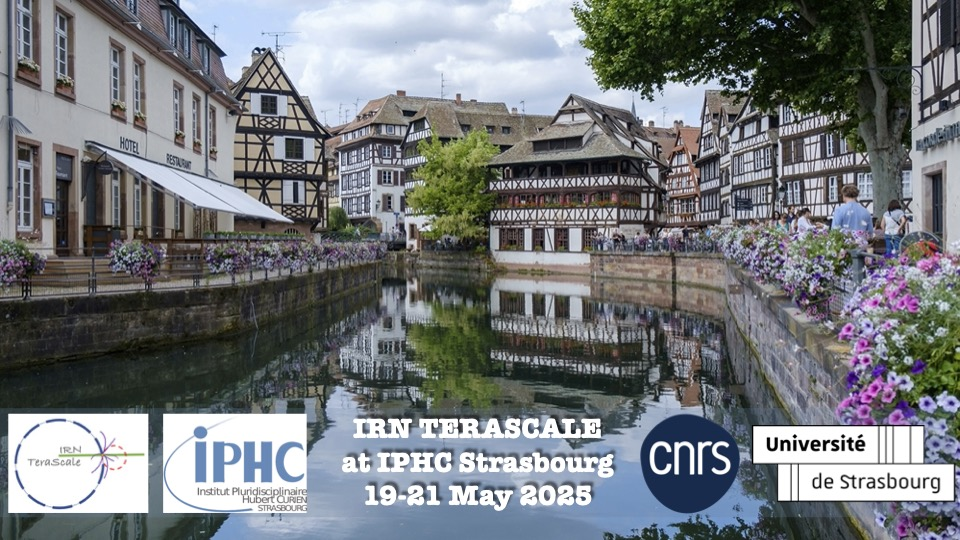In this talk I will discuss particle physics scenarios connecting baryogenesis with first order phase transition. In particular, I will focus on the scenario wherein the CP violation required for baryogenesis is produced by the collision of true vacuum bubbles. I will elaborate both on the case where the right handed neutrino responsible for lepton number violation is produced on-shell as well...
Thermal Dark Matter (DM) below the GeV scale faces strong cosmological and astrophysical constraints, with Cosmic Microwave Background (CMB) observations excluding s-wave annihilation cross-sections for thermal DM below 10 GeV. Such limits can be evaded with velocity dependent cross-sections, for example when DM annihilates near a narrow resonance. In this work, we explore the impact of...
We present the complete one-loop matching of the Minimal Supersymmetric Standard Model (MSSM) onto the Standard Model Effective Field Theory (SMEFT), considering the most general case for the MSSM with conserved R-parity, which has 124 free parameters. The matching is performed with the MATCHETE package, integrating out all superpartners at once with non-degenerate masses. We validate against...
In recent years, significant progress has been made in the development of automated tools that match the parameters of new physics models and the Wilson coefficients of appropriate low-energy Effective Field Theories. This talk will shed light on an extensible, hybrid tool OperatorToC++, that combines the strengths of Mathematica and C++ to facilitate the next steps beyond the matching....
In the precision era of particle physics, accurate theoretical predictions and utilizing the full experimental information are key for advancing our understanding of fundamental physics. In my talk, I will show how machine learning can help us to achieve both in a controlled manner including well-calibrated uncertainties.
Machine learning enables unbinned, highly-differential cross section measurements. A recent idea uses generative models to morph the measured distribution into the unfolded distribution. We show how to extend two morphing techniques, Schrödinger Bridges and Direct Diffusion, in order to ensure that the models learn the correct conditional probabilities. This brings distribution mapping to a...
Many physics analyses at the LHC rely on algorithms to remove detector effect, commonly known as unfolding. Whereas classical methods only work with binned, one-dimensional data, Machine Learning promises to overcome both problems. Using a generative unfolding pipeline, we show how it can be build into an existing LHC analysis, designed to measure the top mass. We discuss the model-dependence...
We show that the Lorentz-Equivariant Geometric Algebra Transformer (L-GATr) yields state-of-the-art performance for a wide range of machine learning tasks at the Large Hadron Collider. L-GATr represents data in a geometric algebra over space-time and is equivariant under Lorentz transformations. The underlying architecture is a versatile and scalable transformer, which is able to break...
Global SMEFT analyses combine a vast range of LHC measurements to construct likelihoods to put constraints on physics beyond the Standard Model. However, constructing and evaluating profile likelihoods for such analyses is computationally intensive and prone to instability and noise. We show how modern numerical techniques, similar to neural importance sampling, can dramatically enhance both...
Keeping the gauge symmetry manifest in the two-Higgs doublet model (THDM)
has turned out to be very powerful. Stability, electroweak-symmetry breaking, basis transformations, and general symmetries can be studied concisely in terms of gauge-invariant bilinears for any THDM Higgs potential. Recently, the formalism has been extended to the complete model, including the gauge and Yukawa sectors,...
One of the LHC's priorities, following the discovery of the Higgs boson, is to observe the production of Higgs pairs and to measure the Higgs tri-linear coupling $\lambda_{3H}$.
Due to the rarity of di-Higgs production, measuring $\lambda_{3H}$ has proven to be highly challenging. Exclusion limits have been observed using a variety of approaches, including cut-based methods and boosted...
The production of a top–antitop quark pair in association with a W boson (${t\bar{t}}W$) is a dominant background in several measurements of rare processes, such as $t\bar{t}H$ and four-top ($t\bar{t}t\bar{t}$) production, as well as in searches for physics beyond the Standard Model. The precision, accuracy, and modeling of the ${t\bar{t}}W$ process represent a major limitation in the...
In the study of the rare $H \to Z \gamma$ process, both ATLAS and CMS collaborations reported an excess with $\mu = 2.2 \pm 0.7$ in the number of events. Initially, this was interpreted as a modification of the $HZ\gamma$ vertex. However, the $H \to Z \gamma$ process is reconstructed from the $H \to \ell \ell \gamma$ final state, and background contributions were previously neglected. In this...

